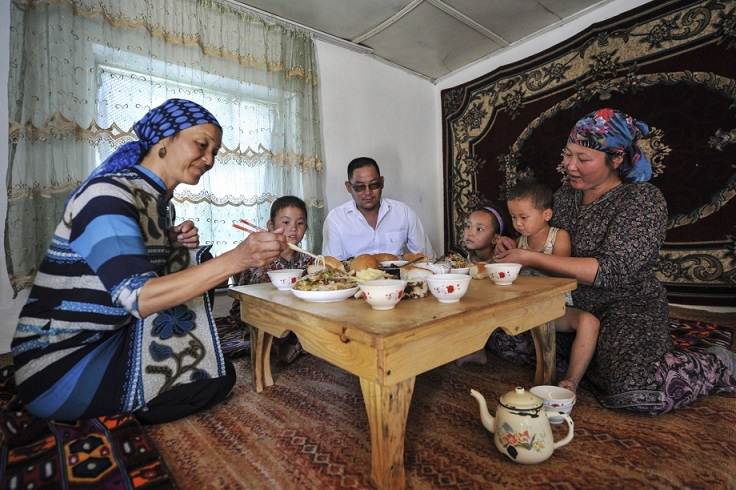Controlling Study of the Impact of the Biofortified Bean Variety SMN39 (Phaseolus Vulgaris L) Associated with Agricultural and Nutritional Education, to Prevent Iron Deficiency in Rural Adolescent Women from Eastern Guatemala
Guatemala, 2016
Get MicrodataIdentification
GTM_2016_CSIBBAANE_v01_EN_M_v01_A_ESS
Controlling Study of the Impact of the Biofortified Bean Variety SMN39 (Phaseolus Vulgaris L) Associated with Agricultural and Nutritional Education, to Prevent Iron Deficiency in Rural Adolescent Women from Eastern Guatemala
| Name | Country code |
|---|---|
| Guatemala | GTM |
Individual Food Consumption/Dietary Survey [hh/ifcs]
Establish the nutritional status of iron, food consumption, and iron consumption prior to the start of the intervention with biofortified beans in all adolescent women between 10 and 16 years old participating in the study.
Sample survey data [ssd]
Individuals
Scope
The survey collected information on:
- SUBJECTS: information on the participants such as age, sex and geographical location.
- CONSUMPTION: information on all foods consumed by each participant in each survey day, including quantities and nutrient values.
The population group covered in the dataset was adolescent women between 10 and 16 years old.
Coverage
Sub-national coverage, only rural areas.
Producers and sponsors
| Name | Affiliation |
|---|---|
| Dr. Manolo Mazariegos | Institute of Nutrition of Central America and Panama (INCAP) |
Sampling
A census was carried out in which 3,000 families who met the inclusion criteria of the study were identified. Of these, 2,100 families with adolescent females were randomly selected. It is an effectiveness study on the use and consumption of an improved bean variety with high iron content in a population of adolescents from the eastern region of Guatemala. In the preparatory phase of the study, a census was carried out to identify the municipalities, communities that met the study selection criteria:
a) Rural population with extensive experience and capacity to produce beans - that is, with access to land for bean production
b) Regular consumption of high beans;
c) High prevalence (%) of chronic malnutrition (“short stature”) and anemia in children under 5 years of age;
d) Municipalities with vulnerable populations according to indices of food and nutritional insecurity;
e) Relatively low presence of other interruptions (social programs) with a demonstrated or demonstrable effect on the prevalence of anemia and/or chronic malnutrition.
From the total of preselected communities, a subsample of 120 communities was taken and in these 2100 families with adolescent women between 10 and 18 years of age were selected. This population was selected because, according to statistics, the group of women of childbearing age (including adolescents) is a population with high vulnerability to iron deficiency (14.5%, Maternal and Child Health Survey 2014-15).
Data collection was performed through home visits. The selected families were notified by local leaders of the arrival of the study staff. To identify the families selected in the communities, the study staff had a list with a contact and address, with which they visited each of the families on the list until the sample was completed. The main informant was the adolescent in the presence of her mother or head of the household.
No surveys weight were used in this survey.
Data collection
| Start | End |
|---|---|
| 2016-08-22 | 2016-10-28 |
- Face-to-face [f2f]
The dietary assessment method was the 24-hour reminder on the day prior to the visit. This instrument included aspects of household identification, family composition, reliability of the information, meal times, preparations, ingredients, home unit of measure, quantity prepared, number of servings, portions consumed and portions not consumed, and leftovers. The survey covered both week days and weekends. No repeated recalls. In addition, a survey was conducted on health and dietary practices, specifically related to the consumption of beans and other sources of iron in the diet.
Data Access
| Is signing of a confidentiality declaration required? | Confidentiality declaration text |
|---|---|
| yes | The users shall not take any action with the purpose of identifying any individual entity (i.e. person, household, enterprise, etc.) in the micro dataset(s). If such a disclosure is made inadvertently, no use will be made of the information, and it will be reported immediately to FAO. |
Users requesting access to FAO datasets must agree to the following minimal conditions:
- The micro dataset will only be used for statistical and/or research purposes;
- Any results derived from the micro dataset will be used solely for reporting aggregated information, and not for any specific individual entities or data subjects;
- The users shall not take any action with the purpose of identifying any individual entity (i.e. person, household, enterprise, etc.) in the micro dataset(s). If such a disclosure is made inadvertently, no use will be made of the information, and it will be reported immediately to FAO;
- The micro dataset cannot be re-disseminated by users or shared with anyone other than the individuals that are granted access to the micro dataset by FAO.
Institute of Nutrition of Central America And Panama (INCAP) & HarvestPlus/ IFPRI; Guatemala, 2017; Impact evaluation of an agriculture intervention in rural Eastern Guatemala (Biofortified High Iron Beans). (2017)
Disclaimer and copyrights
The user of the data acknowledges that the original collector of the data, the authorized distributor of the data, and the relevant funding agency bear no responsibility for use of the data or for interpretations or inferences based upon such uses
Contacts
| [email protected] |
Metadata production
DDI_GTM_2016_CSIBBAANE_v01_EN_M_v01_A_ESS_FAO
| Name | Affiliation | Role |
|---|---|---|
| Victoria Paduladequadros | Food and Agriculture Organization | Metadata producer |
| Oluwakayode Anidi | Food and Agriculture Organization | Metadata adapted for FAM |
Metadata version
GTM_2016_CSIBBAANE_v01_EN_M_v01_A_ESS_v01
